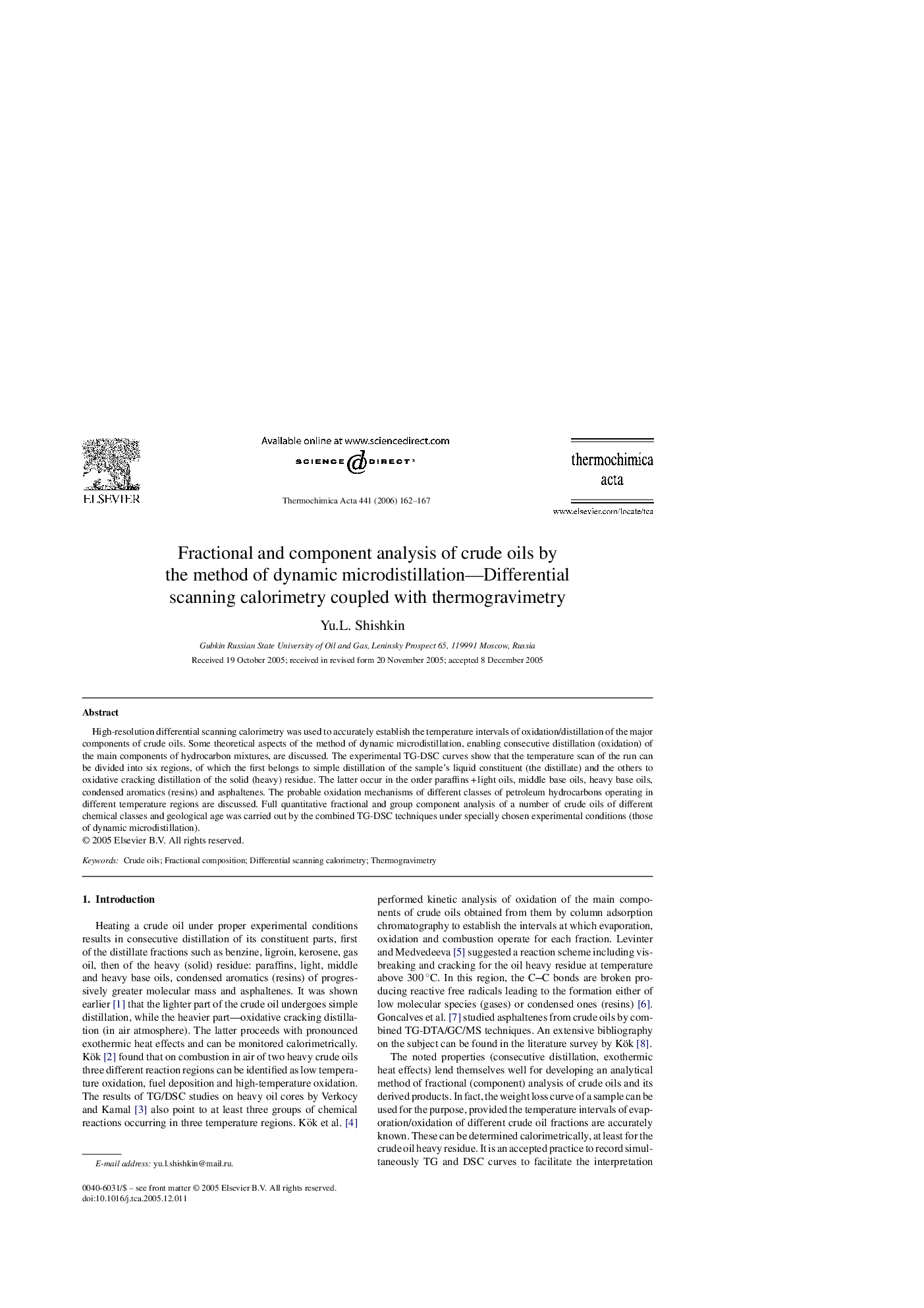| Article ID | Journal | Published Year | Pages | File Type |
|---|---|---|---|---|
| 676036 | Thermochimica Acta | 2006 | 6 Pages |
Abstract
High-resolution differential scanning calorimetry was used to accurately establish the temperature intervals of oxidation/distillation of the major components of crude oils. Some theoretical aspects of the method of dynamic microdistillation, enabling consecutive distillation (oxidation) of the main components of hydrocarbon mixtures, are discussed. The experimental TG-DSC curves show that the temperature scan of the run can be divided into six regions, of which the first belongs to simple distillation of the sample's liquid constituent (the distillate) and the others to oxidative cracking distillation of the solid (heavy) residue. The latter occur in the order paraffins + light oils, middle base oils, heavy base oils, condensed aromatics (resins) and asphaltenes. The probable oxidation mechanisms of different classes of petroleum hydrocarbons operating in different temperature regions are discussed. Full quantitative fractional and group component analysis of a number of crude oils of different chemical classes and geological age was carried out by the combined TG-DSC techniques under specially chosen experimental conditions (those of dynamic microdistillation).
Related Topics
Physical Sciences and Engineering
Chemical Engineering
Fluid Flow and Transfer Processes
Authors
Yu.L. Shishkin,
